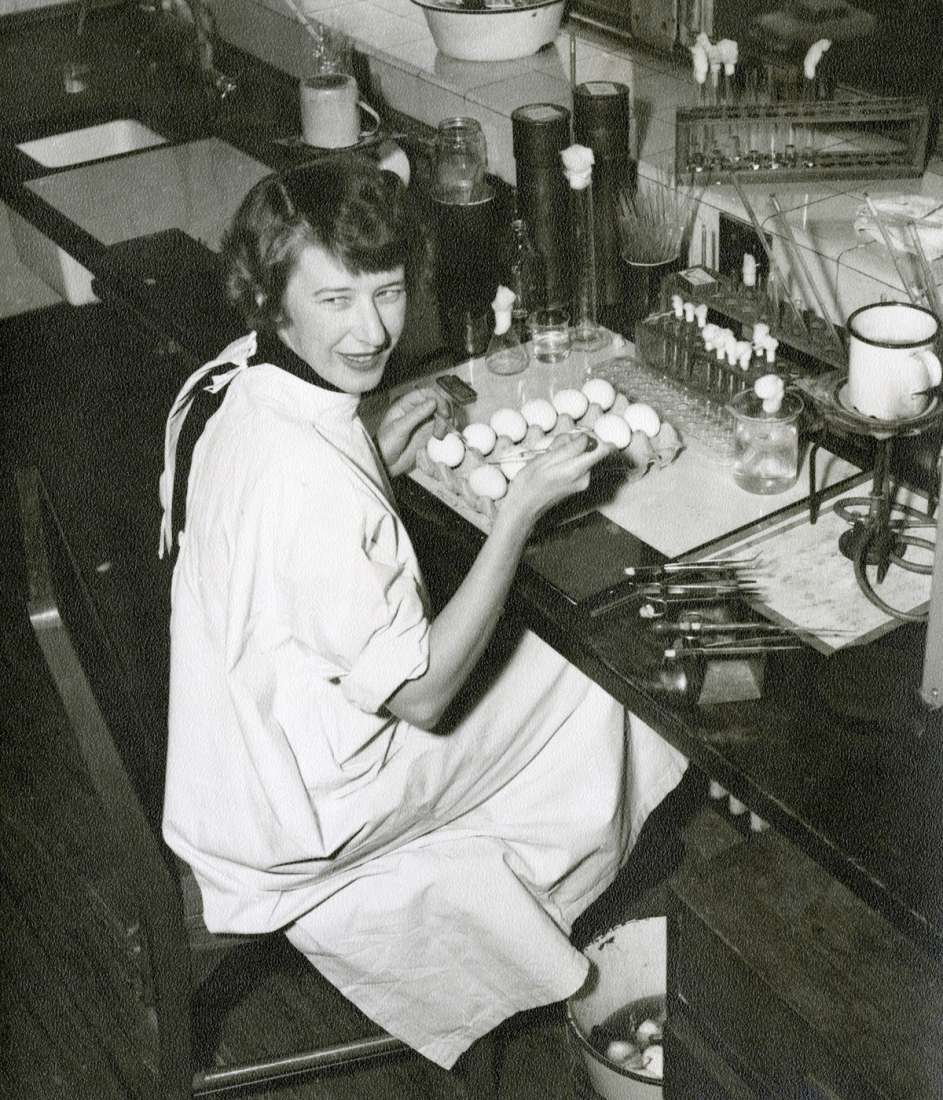Pat Lind (left) and Dr Kingsley Stevens (right) demonstrating recombination of viruses to His Royal Highness Prince Philip, Duke of Edinburgh, while on a visit to the institute in 1954.
In 1949, Macfarlane Burnet and research assistant Patricia Lind become the first researchers to show that flu viruses can exchange genetic material and create new strains.1 This helps to explain how pandemic flu viruses emerge.
Scientists already knew that flu viruses changed – and that vaccines could fail because of this – but they didn’t understand how they changed.
Burnet and Lind use strains of Influenza A sub-types NWS and MEL to infect a cell and find among the virus progeny recombinants with traits of each of the parent strains. These hybrid strains are the first animal viruses ever knowingly produced2
Burnet was “greatly excited” by the result at the time3 The institute produced more than 40 papers around the topic but the research didn’t go anywhere. Burnet abandoned it in 1957 as he switched the institute’s focus to immunology.
The discovery of the ‘recombination’ or ‘reassortment’ of flu strains did, however, provide a standard procedure in many virus laboratories, and acted as a signal to the world that a new approach to flu was needed.
1Burnet, F. M. and Lind, P. E., ‘Recombination of characters between two influenza virus strains’, Australian Journal of Science, vol. 12, p. 109, (1949).
2Burnet F.M., Walter and Eliza Hall Institute 1915-1965, Melbourne University Press, (1971), p124.
3Burnet, Sir Macfarlane, Changing Patterns: An Atypical Autobiography, William Heinemann, (1968), p139.





